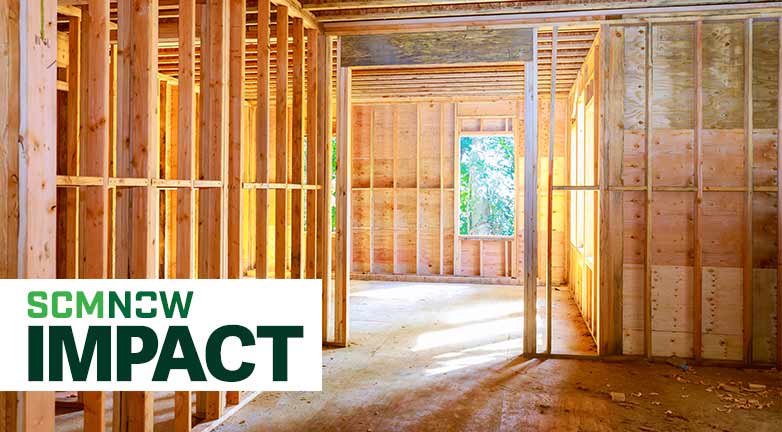The first day of spring is about a week away, and daffodils aren’t the only thing sprouting up in front lawns. For-sale signs have also begun their annual propagation, as spring is notoriously hot for real estate and statistically the busiest season for house-hunting. This year, many of us are also seeing considerably more new construction in our neighborhoods, thanks to a recovering job market and mortgage rates that, although climbing, are still historically quite low.
“The strong demand for homes is seen in the robust year-over-year growth in purchase applications — up by double-digit percentage points in most weeks so far this year — and in the strong pace of home sales, with existing sales at their highest level in 15 years,” writes Mike Fratantoni in Housing Wire. “The challenge has been the lack of supply.”
According to the National Association of Realtors, there are just 1.9 months of supply at the current pace of sales. This inventory dearth has compelled many people to build, but it’s not easy.
The largest portion of a home purchase price is from the lumber yard. According to CBS News, the cost of dimensional lumber has risen by 20%, and engineered lumber has increased an astronomical 250% over last year. This is leading directly to a 10% upsurge in the overall sale price of new homes, making it extremely challenging for builders to deliver what customers desire at a reasonable cost.
“Homebuilders have increased the pace of construction, but continue to struggle with supply chain issues, with a sharp rise in input costs,” Fratantoni explains.
And now, that input isn’t just lumber. This past week, Fox Business reported that there’s also a shortage of flat steel form ties, a critical part used to build basements in new homes. The report faulted just-in-time inventory, tariffs on imports and the supply chain impacts of COVID-19 for the deficit.
“This is a perfect storm of events and factors, not unlike other material shortages that are being pressed by the continued record pace of residential construction,” Jim Baty, executive director of the Concrete Foundations Association, told Fox News.
All said and done, input costs have elevated the price of building a new home by $24,386 since April 2020, according to the National Association of Home Builders.
Strong foundations
If the past year taught us anything, it’s that plans change. Even today, ongoing, major shifts in consumer demand continue to shine a spotlight on the magnitude of supply chains. To underscore the importance of expert supply chain planning, ASCM is proud to announce CPIM 7.0, newly minted as the APICS Certified in Planning and Inventory Management designation.
The enhanced CPIM 7.0 content will enable designees to:
- respond to demand variations and supply disruptions
- manage and mitigate supply chain risk
- understand and embrace emerging technologies, such as blockchain and artificial intelligence
- achieve true resilience and agility in order to help their supply chains thrive.
Make a plan to fortify your supply chain career and team by beginning your own exciting CPIM journey.



